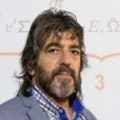FusionCAT Objectives
Key People
Features
Full fusion reactor integrated modelling
Plasma and fusion reactors are systems of great physical, numerical and computational complexity. Their modelling implies the integration of many physical processes and multiple time and space scales. Therefore, in order to understand the behaviour of the plasma, it is essential to couple multiple physics. To this end, the following tasks will be performed: development of multiphysics codes for the modelling of these systems, their experimental validation, and their integration in the production chains that will be used while ITER is functioning.
Neutronics, tritium breeding and operational fuel cycle
The future fusion reactors opt for a cycle based on a huge generation of neutrons in the plasma by means of breeding blankets, which boost the production of neutrons. Furthermore, in order to achieve an efficient energy production, the project will study the impact of the neutrons in the reactor, the combustion cycle, the optimization of the connection between the breeding blanket and the tritium extraction system, and hydrogen recovery together with the fuel cleaning.
Fusion reactor studies
Finally, the FusionCAT project will conduct several studies on technologies that are applicable to the reactor’s design, such as the use of magnets based on High-Temperature Superconductivity (HTS) materials, the assessment of the strength of the materials used in the construction of the reactor, and the implementation of an energy cycle based on supercritical CO2.








